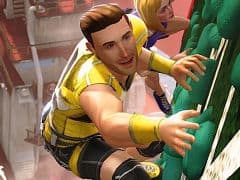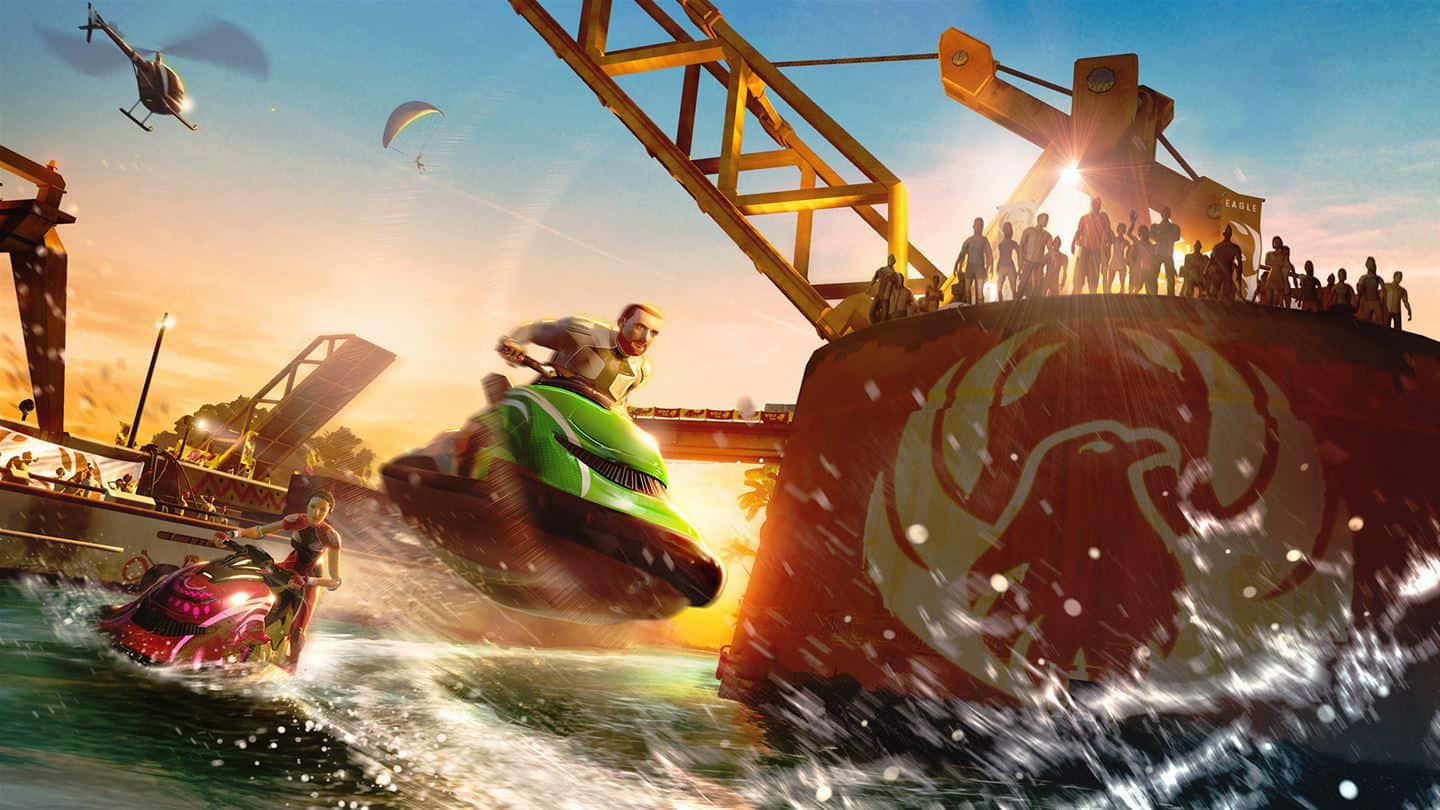You can trust VideoGamer. Our team of gaming experts spend hours testing and reviewing the latest games, to ensure you're reading the most comprehensive guide possible. Rest assured, all imagery and advice is unique and original. Check out how we test and review games here
It was a surreal experience playing Kinect Sports Rivals in the house that built much of my gaming childhood. Rare’s legacy lives strong in the memory of most gamers who can recall nights crowding around a Nintendo 64 with friends desperately searching for a Golden Gun, or enjoying the rush of landing an Ultra Combo, and to actually be walking through those halls feels oddly intimidating.
That said, there is little presence of Rare’s past throughout the offices. Art litters the walls of corridors, but most is from Microsoft developed titles or pieces untied to any game. The only remnant of the developer’s Nintendo roots is a small mural in the kitchen, dedicated to early issues, classic consoles, and the like. It is a sign of the huge transition the team has gone through over the years.
The kitchen has been transformed into a makeshift tutorial area to introduce everyone to the world of Kinect Sports Rivals. After a brief introduction, David Tennant narrates the basics of creating our champions (avatars). This is done through a series of simple tasks using the Kinect sensor, culminating in a final test where you stand a few inches away from the TV (what will the parents think!?) in order to add your face to the character.
My in-game champion, I think, was a pretty fair reflection of my actual face – the chin may be a tad long, but it is a caricature, so I was willing to accept it. His consistent smug expression, however, was intolerable, and even I grew to dislike myself – for others, the Kinect failed to even get their hair colour right, and thus begun several minutes of “tweaks”, which oddly gave me an insight into what it must be like in a plastic surgeon’s office.
This sporadic performance carried over into the individual sports. Bowling and wake racing offered some great fun, with the controls (or lack of) feeling accurate and responsive. Wake racing was a particular highlight; playing through a night and evening race gave real contrast to how the game looks while showing off the water effects. Within a couple of races I was able to tilt and steer with enough accuracy to brush past mines, activating them in order to slow down other racers.
Bowling was a nice, slow paced affair that was great when playing against another person. It feels very similar to Wii Bowling, though the first person camera takes a little getting used to, as the ball will disappear from the screen as you lower your arm. Rare has brought the back of the gutter closer to the pins, making it easier to pick up spares. This also makes it beneficial to throw the ball up the lane as hard as possible, as the rebounding pins have a stronger chance of bouncing off the board and knocking down any that remain standing.
/https://oimg.videogamer.com/images/aadc/your_champion2.jpg)
It was the sports that demanded full-body interaction, or the most pinpoint precision that struggled to cope. Tennis, for example, ran with considerable lag. Watching somebody else play made the issue all the more apparent; players had completed their swing before their champion even begun the motion. Split screen also serves to the detriment of both players. The game splits the screen horizontally, making it much harder to see the incoming ball. Considering the movement of champions is handled automatically, it would be preferable for a vertical divide to have a closer view of your avatar and how close they are to the ball.
Shooting also failed to live up to expectations. Players are required to hold their hand up to the screen as a ‘gun’, point at targets, and the game will auto-fire for you. The trouble is, the aiming reticule on-screen was horrifically jumpy, reminiscent of the days of playing Time Crisis and forgetting to sync the light gun before jumping into arcade mode. Having to take a brief pause over each target is also frustrating: I was told the team had experimented with players pulling their trigger finger, but found repetitive strain injury an issue.
Rare has often been a leading force in showing what Kinect can do for Microsoft, the one first-party developer who has consistently been relied upon to show us why this piece of kit is worth getting off the sofa for. Kinect Sports Rivals certainly shows signs of what Kinect 2.0 can do that simply wasn’t possible on 360. I was very impressed by the facial scanning, and the ease of reaching to the side and closing my fist to pick up my bowling ball or making the same action to grab onto pegs in rock climbing – that’s great. The problem is, the hardware struggled to do keep up, and suffered with many of the same issues that plagued the original kit.
The lag of some sports, coupled with the twitchiness of others, left me concerned with how much better Kinect 2.0 can actually be. If the pioneers of the hardware can’t get it running smoothly, then what hope do other developers have?







